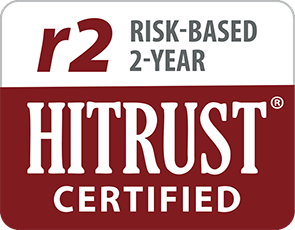Written by Ashley Kane,
Brightside Health
7 Minute Read

Medically reviewed by:
Erin O'Callaghan, PHD
Director of Therapy
10 Minute Read

For the purposes of this article, we will use “females” to refer to people who were born female (sexual identity, not gender identity). If you do not identify with this, please feel free to use this information in whatever way is most useful for you.
Bipolar disorder is a complex mental health condition, and there are significant differences in the onset and symptoms of bipolar disorder in females versus males. While we recognize and honor the challenges of a gender binary definition of “male” and “female,” many of the nuances in bipolar disorder symptoms in females relate to reproductive hormones operating since birth.
There are a number of unique features of bipolar disorder in females. A recent study published in the Indian Journal of Psychiatry summarized these distinctions as:
- A later age of onset of bipolar disorder in females
- Seasonality of symptoms
- Atypical presentation
- A higher degree of mixed episodes
Let’s review some of the symptoms of bipolar disorder, and then look more closely at where biological differences occur.
If you are experiencing the signs and symptoms of bipolar disorder, or have other mental health concerns, you can talk to a mental health professional at Brightside Health. Start with a free assessment.
Symptoms of bipolar disorder
As we have discussed before in our blog, bipolar disorder is a mental health condition associated with extreme mood swings. Those with bipolar disorder experience episodes of mania (elevated moods and emotional highs), and depressive episodes (emotional lows and depressed moods). These episodes, whether manic or depressive, will govern the symptoms that an individual may experience.
Manic symptoms can include:
- Irritability
- Feeling jumpy or wired
- Decreased need for sleep
- Feeling unusually important or powerful
- Feeling like you can do multiple things you wouldn’t typically do all at once
- Loss of appetite
- Poor judgment or engaging in risky behavior
- Racing thoughts
- Rapid speech about many different topics
Symptoms of bipolar depressive episodes can include:
- Fatigue
- Feeling bad about yourself
- Difficulty concentrating
- Eating more than usual
- Feeling hopeless, worthless, or helpless
- Little interest in activities you usually enjoy
- Restlessness
- Sleeping too much or too little
- Suicidal thoughts or ideas of self-harm
Generally, bipolar disorder is categorized into one of several major types.
Bipolar I is defined by the National Institute of Mental Health as “manic episodes that last at least 7 days, or by manic symptoms that are so severe that the person needs immediate hospital care. Usually, depressive episodes occur as well, typically lasting at least 2 weeks. Episodes of depression with mixed features (having depressive symptoms and manic symptoms at the same time) are also possible.”
Bipolar II is similar, except that it does not feature manic episodes. Instead, bipolar disorder II symptoms in females and males tend to include “hypomanic” episodes which are shorter and less severe.
Those who experience symptoms of bipolar disorder who do not quite meet the criteria for a diagnosis of bipolar I or II may be diagnosed with cyclothymic disorder or other unspecified bipolar disorder. Cyclothymic disorder is often seen as a less severe version of bipolar disorder, but the symptoms persist across years and can still be highly disruptive to one’s life.
Bipolar disorder symptoms in females
Historically, bipolar disorder symptoms in females were dismissed and disregarded by physicians. Medical providers may improperly treat females with regard to bipolar II due to inaccurate and stereotypical portrayals of women that portray them as regularly experiencing fluctuating moods. It’s very important for mental health professionals to be aware of any potential biases in this regard.
The US Department of Health’s Office on Women’s Health explains that females with bipolar disorder are “more likely than men with bipolar disorder to have other physical and mental health conditions, including problems with alcohol use, depression caused by bipolar disorder, thyroid disease, obesity caused by medicines that treat bipolar disorder, and migraine headaches.”
Because it’s also vital that individuals and family members recognize the signs of bipolar, here are some nuances in its presentation in females to watch for.
Often depression first
According to a study in the Indian Journal of Psychiatry, “Many female bipolar patients initially present with depressive symptoms, that is why many times they are misdiagnosed.” It is not uncommon for females to be treated for other depressive disorders instead of bipolar disorder. This also results in females being more likely to be diagnosed with bipolar II.
Rapid cycles
As we mentioned above, bipolar II is characterized by rapid cycling between depressive lows and hypomanic highs. There seems to be a strong correlation between these mood cycles and a female’s hormonal cycles. The US Department of Health’s Office on Women’s Health says, “Changing hormones during the menstrual cycle, pregnancy, and menopause can affect how severe a woman’s bipolar disorder is.”
Later onset
Females tend to see a later onset of bipolar disorder symptoms than males do, with most diagnoses happening in their late twenties. While studies are uncertain why this is the case, it may have a good deal to do with the stereotyped notion that bipolar disorder symptoms in teenage females are frequently seen as “normal” behavior. This may be particularly the case with symptoms of bipolar II.
Treatment for bipolar disorder
Treatment is often very successful in helping manage bipolar disorder symptoms in females. Treatment generally involves a combination of therapy and medication. Medication for bipolar disorders might include mood stabilizers and second-generation antipsychotic medication.
The importance of a support network
In addition to professional treatment, social support is an important element for managing bipolar disorder symptoms in teenage and adult women. This is especially true when it comes to having a consistent source of support who can be there at both high and low points. Having people there to watch out for us, and help us to identify the signs and symptoms of bipolar disorder when they appear, can be a vital asset.
If you think you might be experiencing the symptoms of bipolar disorder, it’s important to see a mental health provider right away. At Brightside Health, we can help treat bipolar II disorder and bipolar I disorder without acute mania.
Resources:
If you are in emotional distress or thinking about hurting yourself in any way please make use of these resources:
- Visit: If you are having a medical or mental health emergency, call 911 or go to your local emergency department
- Text: The Crisis Text Line provides 24-hour free and confidential help. Text ‘HOME’ to 741-741 to connect with a counselor immediately
Call: You can call the 988 Suicide & Crisis Lifeline simply by dialing 988 to talk with a live counselor 24 hours per day













